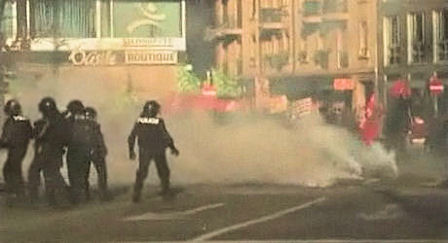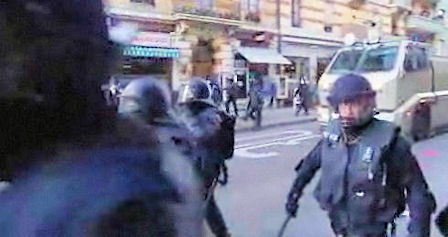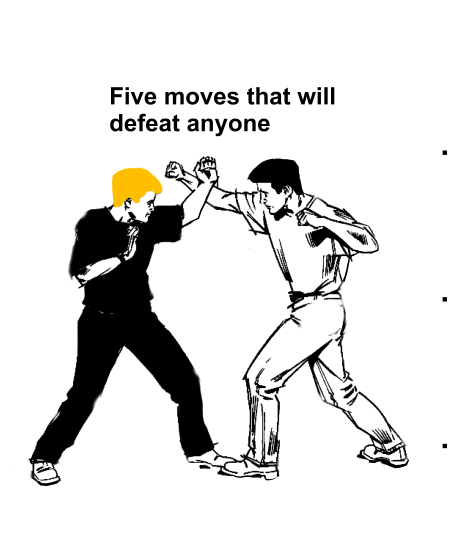
Riots and survival
(Crowds and demonstrations)
by Survival Expert James Mandeville ©2021
(First published January 2018; revised February 2021)
This article is primarily for:
The General Public.
- RETURN TO ARTICLES LIST -
Unrest — A Global Phenomenon
The start of 2021 has already experienced civil unrest in many parts of the world. Here, in the UK., protests by people objecting to prolonged lockdown because of the Corona virus pandemic broke out with similar, often violent anti–lockdown protests, flaring up in many European countries (Berlin, Brussels, Amsterdam among others). While most of these protests were legitimate and peaceful some sources claim the groups who organized the protests were often infiltrated by far-right activists, anti–vaccine supporters or those who subscribe to various conspiracy theories relating to the Covid Pandemic. It has been suggested that these far–right groups attempted to turn peaceful protests into violent clashes with the authorities to further their own aims.
On 06 January 2021, thousands of protesters went to the Capitol building in Washington, USA, where a joint session of Congress was beginning the Electoral College vote count to substantiate victory by President Biden. Some militant protesters in the crowd at the Capitol broke through police perimeters and stormed the building intent on stopping the vote counting, resulting in damage and violence. It appears that other protesters caught up in the moment also entered the Capitol Building and matters quickly got out of hand.
Demonstrations in Russia began on 23 January 2021 in support of the opposition leader Alexei Navalny after his arrest and the release of a film on social media showing a palace allegedly built for President Putin. On the first day, protests were held in 198 towns and cities across Russia in what were one of the largest anti-government demonstrations for seven years.
The Indian farmers' protest is an ongoing protest against three farm acts which were passed by the Parliament of India in September 2020. After two months of protests tens of thousands of farming union members marched towards the nation's capital and were met with water cannons, batons, and tear gas to prevent them from entering into Haryana first and then Delhi. On 30 November, an estimated crowd of between 200,000 to 300,000 farmers was converging at various border points on the way to Delhi. This protest is still on going and has gathered momentum
The 2020–2021 Belarusian protests are a series of ongoing political demonstrations and protests against the Belarusian government and President Alexander Lukashenko. The demonstrations began in the lead-up to and during the 2020 presidential election, in which Lukashenko sought his sixth term in office and declared himself the winner; the opposition party and their supporters claimed the election was rigged and protesters took to the streets.
The 2021 Myanmar (Burma) protests are domestic civil resistance efforts in Myanmar in opposition to the 2021 Myanmar coup d'état, which was staged by Min Aung Hlaing, the Commander-in-Chief of the Tatmadaw on 1 February 2021. Protesters have employed peaceful and nonviolent forms of protest, which include acts of civil disobedience, labour strikes, a military boycott campaign, a pot-banging movement, a red ribbon campaign, public protests, and formal recognition of the election results by elected representatives.
The Risk to the Innocent
Protests and demonstrations are becoming increasingly common place these days and as the examples cited above show, 2021 has started with its fair share of global civil unrest, ranging from peaceful to violent protests. It takes relatively little for a peaceful assembly to become aggressive and then violent especially when it comes to political unrest. In the past it took a lot of time, effort and planning to organize any form of protest but using social media large groups of protesters can be mobilized very quickly and without warning. For this reason there is quite a high risk of being caught up in a situation that is both dangerous and potentially life threatening.
Danger to innocent bystanders caught up in a crowd is not just limited to riot and protest. Large gatherings, for example, a crowd celebrating a football victory or attending or leaving a music festival, can also be a danger as crowds have their own psychology and physical injury is not uncommon in these 'peaceful' events. Knowing how to protect oneself in a crowd is a survival skill we all need to understand.

The advice given in this article is all about surviving in a crowd of people but the best defence is prevention, avoiding getting caught up in civil unrest or in a large crowd of people in the first place.
What are the Dangers?
Even in a large, peaceful crowd there is a risk of physical harm from being crushed or trampled on. Peaceful demonstrations can quickly turn confrontational either from clashes by opposing factions or when police try to break up and disperse an angry and frustrated crowd. Law and order can quickly break down when confrontations become violent. The first rule of survival is to read the signs around you. If you hear people shouting, glass breaking, police sirens, see smoke from burning cars, the obvious thing to do is to get as far away as possible, if this is not practical, get off the streets, take cover in a building. Innocent bystanders often end up as victims of crowd violence or are arrested simply because they are in the wrong place at the wrong time.
At home or abroad, it is possible to get caught up in a civil disturbance and the advice given below is largely common sense but it makes you think about what you would do in such a situation. In escalating street violence, when people are behaving mindlessly and the authorities are trying to stamp on the trouble before it escalates, events move fast and it is not so easy to calmly think through what to do. Innocent people do get hurt in these situations and children are at particular risk.
Things often go wrong because anti–social elements see these protests and demonstrations as an opportunity to move matters to the next level so they infiltrate the demonstration and incite violence. Violence can also flare up because emotions run high among the protesters and the target of this anger is often the police who are trying to control the situation.
Property is also a target for this burst of anger and frustration and it is usually when a small number of people start damaging property the police take affair and trouble escalates. If any of the protesters attack the police (throw stones, punch a police officer, become verbally abusive etc.) the police response is to use tougher measures in return in an effort to isolate and arrest the key troublemakers. The police are not too forgiving in these situations and innocent people do get arrested or injured by mistake.
Riots
Riots are relatively rare in most countries. A riot is a number of determined people making a decided attempt to overthrow an unpopular regime, in effect an armed conflict and the prelude to civil war. Authorities respond with the appropriate degree of force. They use the military and riot police to get the situation rapidly under control and extreme force is used, often with little warning, in a determined effort to eliminate the ringleaders and to panic and disperse the rioters. If a riot becomes protracted it is often the case that it becomes accordingly more desperate and more violent.

Anyone taking part in an unauthorized protest or demonstration runs the risk of being arrested or being seriously injured. This is a risk the participants are prepared to accept. For this reason, stay away or get away. Curiosity appears to be the main magnet that draws innocent people to the scene of a protest, also there those who want to film the event either for their own amusement or to sell footage to the media. Do not be drawn on to a potentially dangerous situation like this, innocent people run the same risk of arrest or injury as the people involved. Remember, when feelings are running high, an angry mob is dangerous and unpredictable so if you are not directly involved you have two great dangers, the mob and those trying to control them.
If you are caught up in such a situation, do not get involved. This may mean taking control of your own indignation, for example, if you see riot police being (in your opinion) brutal with a prisoner, do not start your own protest. They will arrest you simply because they don't have the time to debate matters with you. Do not confront or argue with the protesters, as they will see you as "the enemy." Do not take photos; the mob and the authorities will both react negatively to this. Stay on the side–lines and look for a means of escape.
If you are caught in the crowd

Moving in a densely packed street crowd is like trying to swim through a strong ocean current. You have to move with the crowd do not try to move against it. The greatest danger in any crowd is being knocked down and getting trampled, especially if the crowd is fast-moving (trying to escape a police charge, tear gas, etc.). Go with the flow and carefully edge your way to the perimeter and look for a building you can enter (hotel, etc.) or a side street that takes you away from the centre of trouble. Do not enter subways — they can get packed and become very dangerous places.
If you are a family, trying to stay together is not always possible, so arrange a meeting place in case you get separated. Do not let children walk, always pick them up and carry them. Carry a child to one side of you so you can see where you are going and you can better protect the child. If you are in a stadium, experience shows it is better not to flee for the exits; many people are trampled or crushed to death at exit points. It is better to stay where you are or get onto the stadium ground and wait until the police or security people tell you what to do.
If you fall down, curl up into a ball. Protect your face, ears and internal organs. In this position, you are a smaller object that can be avoided. You will receive less damage if you are stepped on. Watch for the opportunity to get back on your feet as quickly as you can.
Things you should avoid doing
In the crowd, do not panic and try to force people out of your way in your desperation to escape. Even jostling others can be interpreted as aggression in this emotionally inflamed situation. You may also cause someone to fall and be trampled.

Do not approach police lines thinking they will rescue you. Riot and crowd control police use a strategy designed to drive the crowd like cattle to an area where they can disperse them or arrest them. If you approach police lines, they may assume you are going to attack them and you run the risk of being hit by a rubber bullet, being smacked down with a baton or being shot dead. Driving towards police lines can be misinterpreted. Police are trained and prepared to protect themselves against deadly threats meaning that you may be shot at if they think you are going to run them down.
Do not use public transport (if it running) as all public transport vehicles can become targets of the mob.
If you are driving, do not stop. Drive slowly and use your horn to get people to move. If your car is attacked, get out of it and get away. Better to lose your car than your life. Don't speed up and risk knocking protesters over; experience has shown the mob will instinctively turn on anyone who does this.
Learn to defend yourself
It takes just five seconds to win a fight. These five moves are guaranteed to put down any opponent. (If the animation doesn't start in a couple of seconds, click on the animation to start it from move one.)

Although called "five moves that will defeat anyone" you should practice the whole sequence so it flows like one move. If someone throws a punch with his or her right hand, block it with your left and practice also blocking with your right in case you meet a left-handed assailant. If you learn nothing else, this technique will stand you in good stead if confronted. Of course, it is best to join a club and learn self-defence but find one that teaches specific defence skills appropriate to dealing with casual violence, rather than learning Eastern martial arts (unless that grabs you). If you can find an instructor who taught close-quarter combat in the Army, so much the better.
